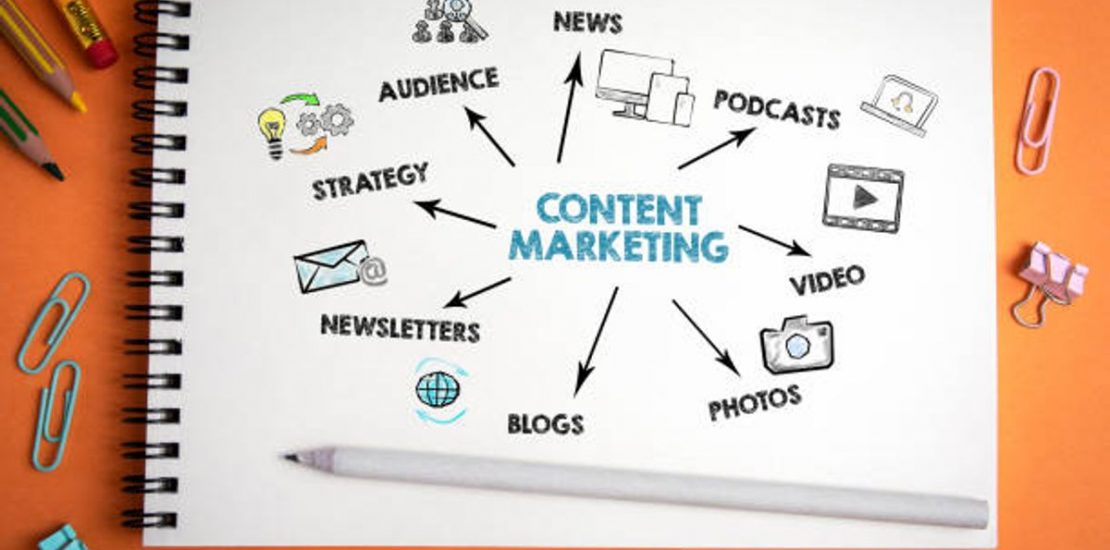- July 12, 2022
- Posted by: Badrostechiesbest
- Category: Marketing

This article explains what Content Marketing is, provides examples, and states the importance of content marketing.
By producing and disseminating pertinent articles, videos, podcasts, and other media, content marketing is a marketing tactic used to draw in, hold onto, and grow an audience.
When it’s time to buy what you sell, people will think of your company first thanks to this strategy’s promotion of brand awareness and establishment of competence.
The creation and dissemination of pertinent, helpful material—such as blogs, newsletters, white papers, social media postings, emails, videos, and similar items—to current and future clients is known as content marketing.
When done well, this content demonstrates competence and makes it obvious that a business values the customers it serves.
Using content marketing consistently helps you build and maintain relationships with both current and potential clients.
When your target market views your business as a partner invested in their success and a reliable source of information and direction, they are more likely to choose you when the time comes to make a purchase.
Importance of Content Marketing
One tried-and-true method is content marketing. It also gives you a competitive advantage. Look at the statistics of content marketing:
- Businesses who blog receive 67 percent more leads than competing businesses.
- Before speaking with a sales professional, 47% of buyers view 3 to 5 pieces of material.
- Businesses who use content marketing experience growth rates that are about 30% greater than those who don’t.
- Business to business (B2B) marketers claim that content marketing enhances engagement and the number of leads they produce by 72%.
How Content Marketing Works
Our company may employ content marketing to draw in leads, convince them to buy your good or service when they shop, and seal deals.
Deliver the appropriate content at each point of the sales cycle, from awareness through consideration to purchase, in order to use it successfully.
If this sounds challenging, relax—using this method to approach content really makes things easier.
Here are how businesses engage and close sales at each stage of the sales cycle.
Awareness Stage
Your content should be centered on your audience’s main issues throughout the initial stage of the sales process.
You have the highest opportunity of connecting with them through writing about their problems, obstacles, and inquiries.
At the awareness level, the content should be instructional and instructive. During the consideration and closing stages is when you should sell.
The best content for this stage: newsletters, e-books, blogs, e-posts, and blog postings.
Examples:
A restaurant blogs about how to create a meal for a spring graduation party.
A little film on “3 Ways to Choose the Right Bike Trip” was made by a bike touring company.
An e-book titled “Questions to Ask Before Hiring an Architect” was produced by an architecture business.
Consideration Stage
Content should provide a mix of useful information and marketing at the consideration stage. It ought to inform the reader about the qualities or capabilities to seek out as well as how different features cater to different needs. Of course, the focus of your writing should be on the services that your company provides.
Case studies, how-to articles, how-to videos, and checklists/worksheets are the best types of content for this stage.
Examples
The “8 Ways to Improve Your Phone Customer Service” checklist was produced by a cloud-based phone system provider and lists the attributes and capabilities necessary for excellent customer service.
Case studies about “The Biggest Mistakes Most People Make When They Hire a Landscaper” are produced by a landscaping business.
The case studies of successful events that a catering company offers are highlighted along with the advantages they provide, such as “How to Accommodate Food Allergies at Your Next Event” or “How to Ensure Your Caterer Uses Sustainable Practices.”
Closing Stage
When a potential customer is about to make a purchase, content marketing is crucial. You can concentrate on sales at this point as long as you keep emphasizing why you’re the greatest option rather than just how excellent your services or products are.
Your knowledge, experience, and the unique advantages of what you sell should be the main points of your message.
Case studies, user-generated content, buyer’s guides, product videos, and research reports are the best types of content for this stage.
Examples:
A consulting company produces a study that demonstrates that companies with greater growth rates engage in strategic planning, third-party evaluations, and other services that are influenced by the services it provides.
A design firm makes brief videos displaying the variety of its work in several industries to showcase its wide range of competence.
An orthodontic office invites clients to write testimonials about its cutting-edge tools and first-rate care.
How to Get Started with Content Marketing
However, content marketing doesn’t have to seem daunting. A manageable and long-lasting content marketing campaign is essential. To get started, follow these steps:
- Decide who they are. You must have a thorough understanding of the priorities, difficulties, and preferences of each reader before you can provide content for them. Pick 1 or 2 segments to write for if you have in-depth explanations of them. If not, create profiles of your audience and potential customers before beginning.
- Choose the appropriate formats. The stage of the sales cycle for which you are developing content will determine the appropriate format. What formats will best enable you to demonstrate value is another crucial factor to take into account. This will be a video for some people and a checklist for others.
- Choose a writer, editor, and proofreader for your copy. Your material will be evaluated by an audience, and they should. Choose the best internal or external resource to produce this work. Regardless of who creates it, have it before it leaves the building proofread by a professional.
- Decide on your distribution strategy. Will you publish the information on your website, send it by email, or print it for a gathering? Start with “where” you anticipate your audience to be, then pick forms that make sense. A buyer’s guide is a useful follow-up to a pitch, a checklist or worksheet can be shared on social media, and an essay makes sense to distribute via email.
- Pick a timetable that is manageable. Making an overly ambitious content marketing plan is simple. Develop a short-term (3-6 months) plan for a realistic quantity of content items you can create based on your budget and resources once you are aware of your target readers and the formats. So that you can factor that time into your timetable, keep note of how long it takes you to produce each piece of content.
- Observe good practices. Clear writing without the jargon that only you and your peers will understand makes for compelling material. How-to guidance should be included as well. The ideal piece of content is brief, pertinent, and actionable.
SEO in Content Marketing
Good prospects are more likely to find your company thanks to content marketing. Utilizing SEO is one method for doing this (SEO).
Although there is a wealth of information about SEO, start by concentrating on a few key best practices.
Choose keywords
Your SEO campaign’s basis is built on keywords. When a prospect is looking for a business, product, or service, they will type these crucial words and phrases into a search engine.
You’ll get more visitors if you use the proper keywords in your content. The ideal search terms are:
- Use plain language to speak to your audience’s wants and pain areas.
- Relevant: terms that correspond to the knowledge, goods, and services you offer
- Specific: a fusion of your industry expertise, your target market’s pain concerns, and other pertinent information
Deliver on your Promise
Due to the evolution of SEO, your content’s ability to perform as promised now plays a role in how well it does in searches.
Search engines examine content copy, evaluate its relevance, and decide whether it fulfills the promise made in the title.
Considering how much weight search engines give to copy, it’s crucial to apply keywords consistently throughout your content. Use the following recommendations:
- Pay attention to 1–2 keywords. By concentrating on just a few keyword words, write about the things that matter to your prospects to avoid “keyword stuffing.”
- In the title, include keywords. Make the topic of the piece distinct and unambiguous.
- Use keywords consistently. Try to find a way to include your keywords in your text naturally.
- Remain focused. The best results come from high-quality material that offers guidance in relation to a headline.
Social Media in Content Writing
It’s time to spread the word about your content once you’ve created it. A tried-and-true method of promoting your material is through social media, including Facebook, LinkedIn, YouTube, Twitter, Medium, Instagram, and others. You create a post and provide a link to your material and presto! There is participation.
3 steps can be used to accomplish this:
- Concentrate on channels with significant potential. The social media platforms that your audience uses frequently are the greatest for you.
Take into account both the larger, more well-known channels as well as the smaller, more niche ones that can introduce you to potential customers. Build a reasonable list based on the channels your audience prefers by asking them for their recommendations. - Be sure to tailor your copy to the channel. Each social media platform has its own voice, professionalism versus fun scale, and other characteristics.
Spend some time reading through posts to become familiar with these specifics before you start writing content for a channel. Then, add a little of your own brand personality to your articles. - Test and adjust your strategy. A successful social media promotion campaign requires some trial and error.
Keep track of the quantity and quality of responses from the different channels. A channel may be a good fit if there are fewer high-potential engagements than there are clicks that never result in an audience
Final Notes on Content Marketing
Content Marketing is a good way to get your products/services out there to your potential customers. You can employ the use of Social Media Marketing and Search Engine Optimization for effective results.

[…] check out Content Marketing Benefits.The new-age company model is more dispersed than ever before, with traveling salesmen, remote […]